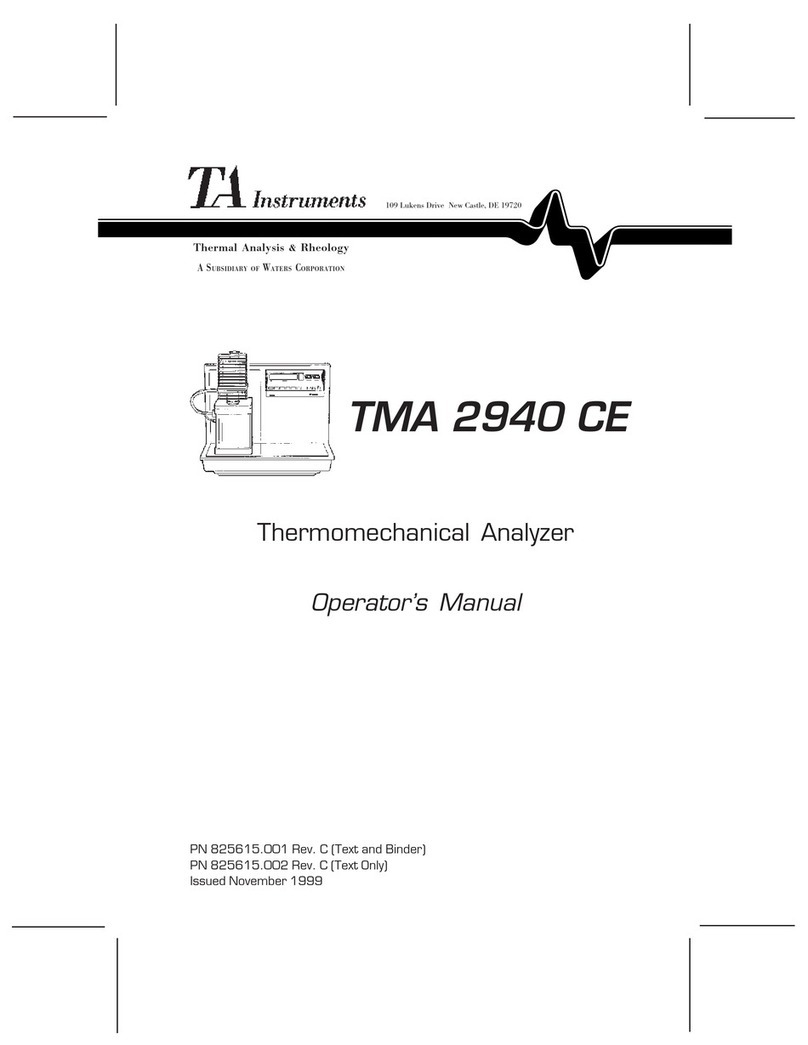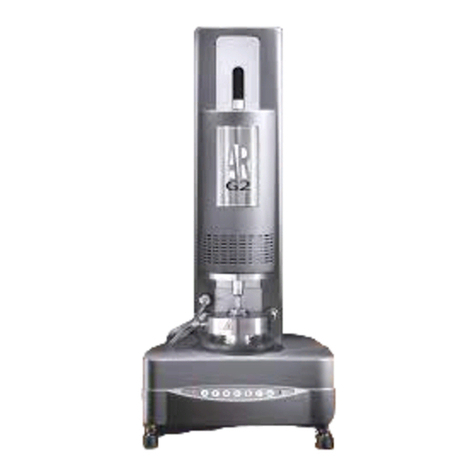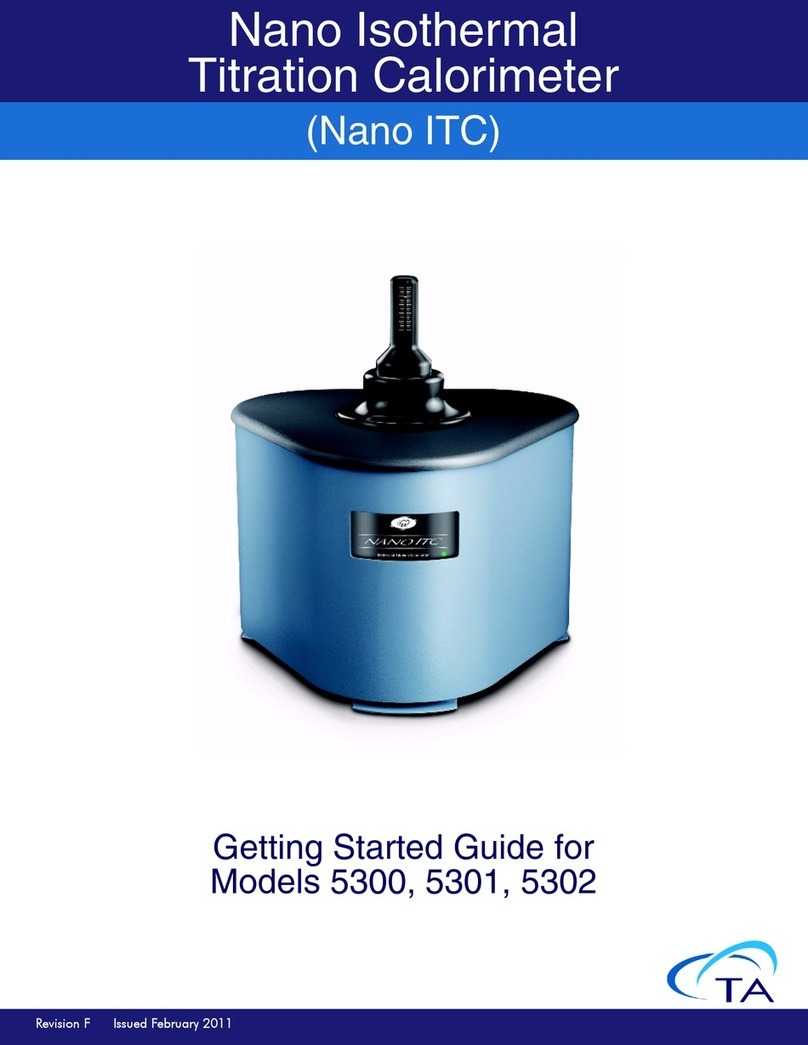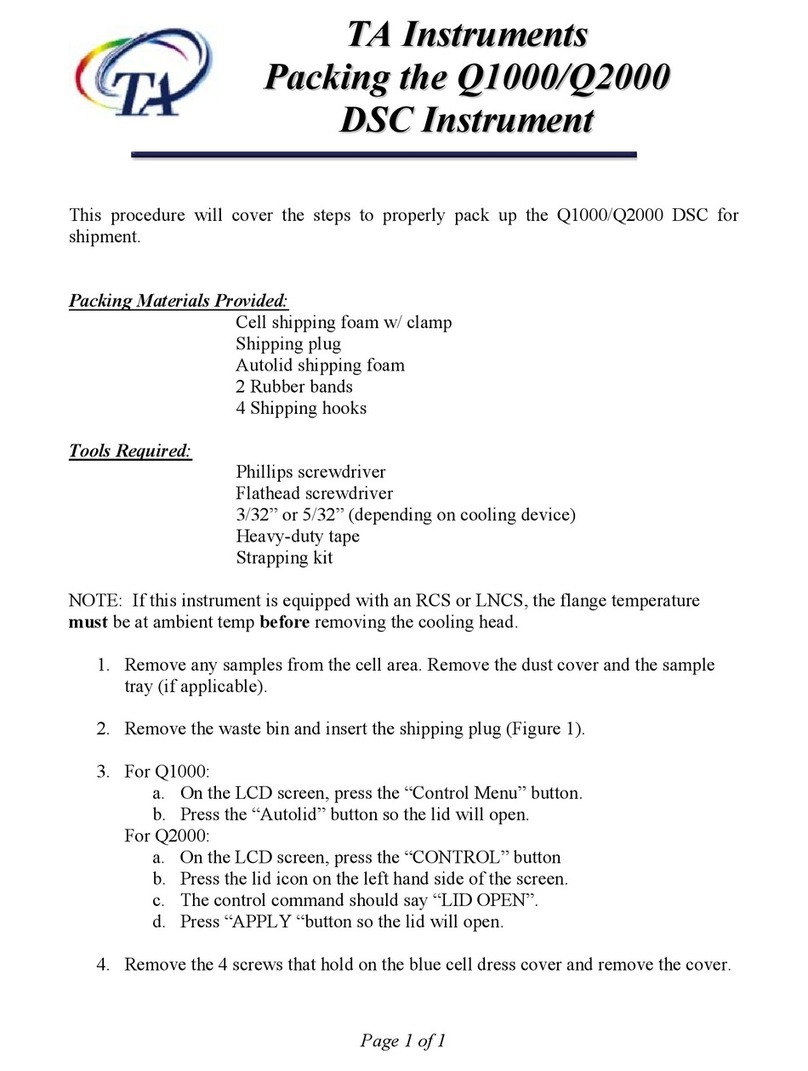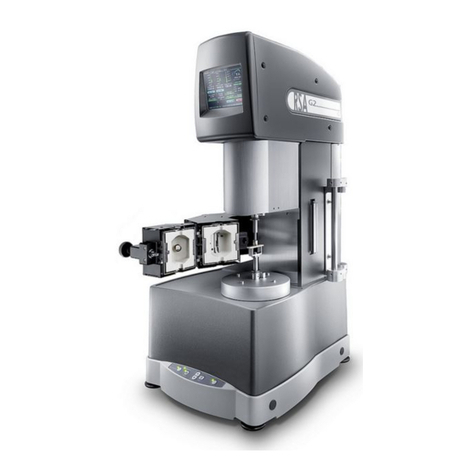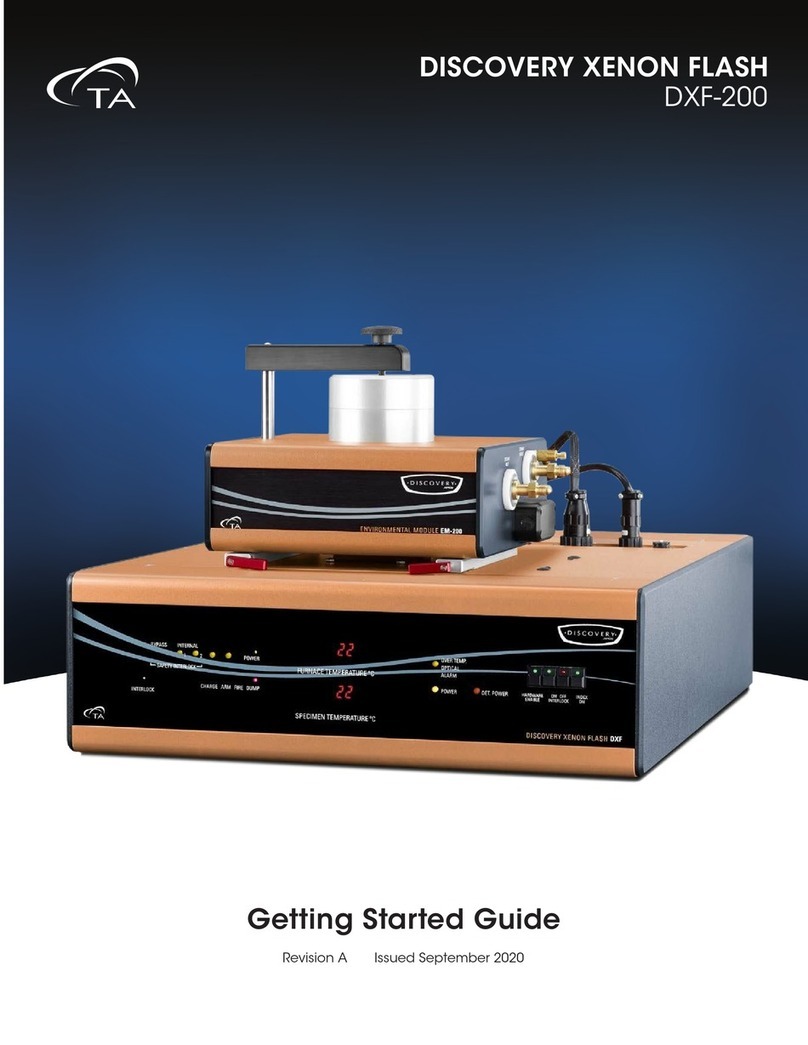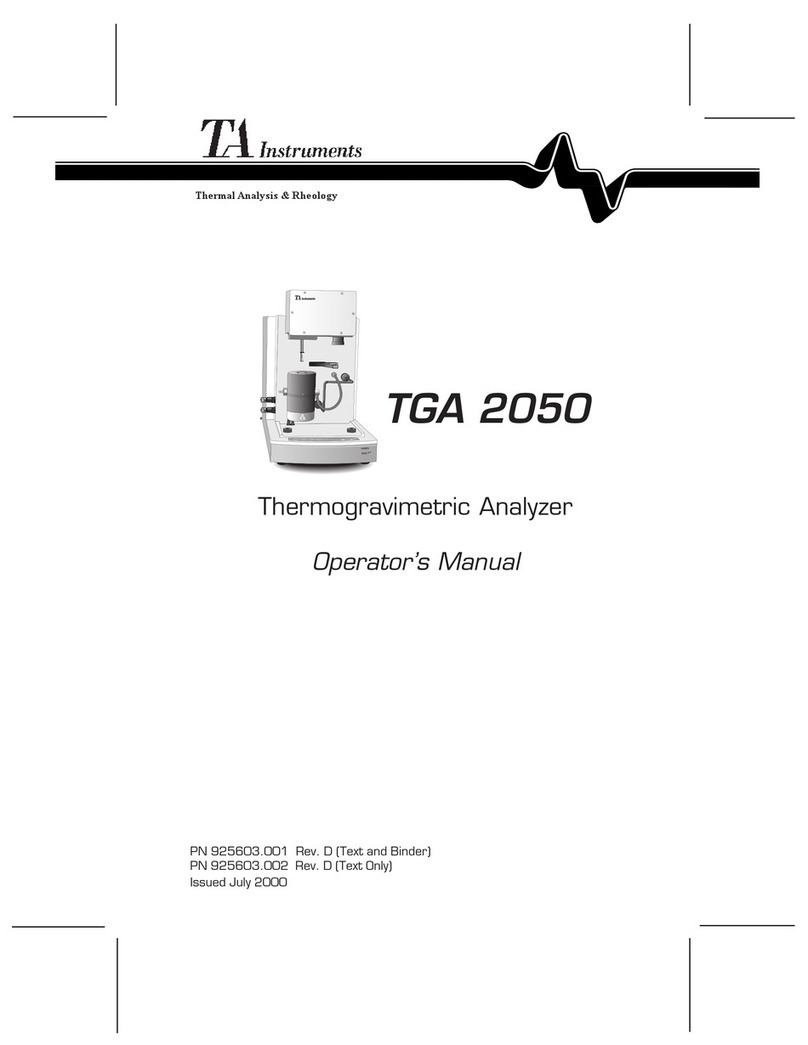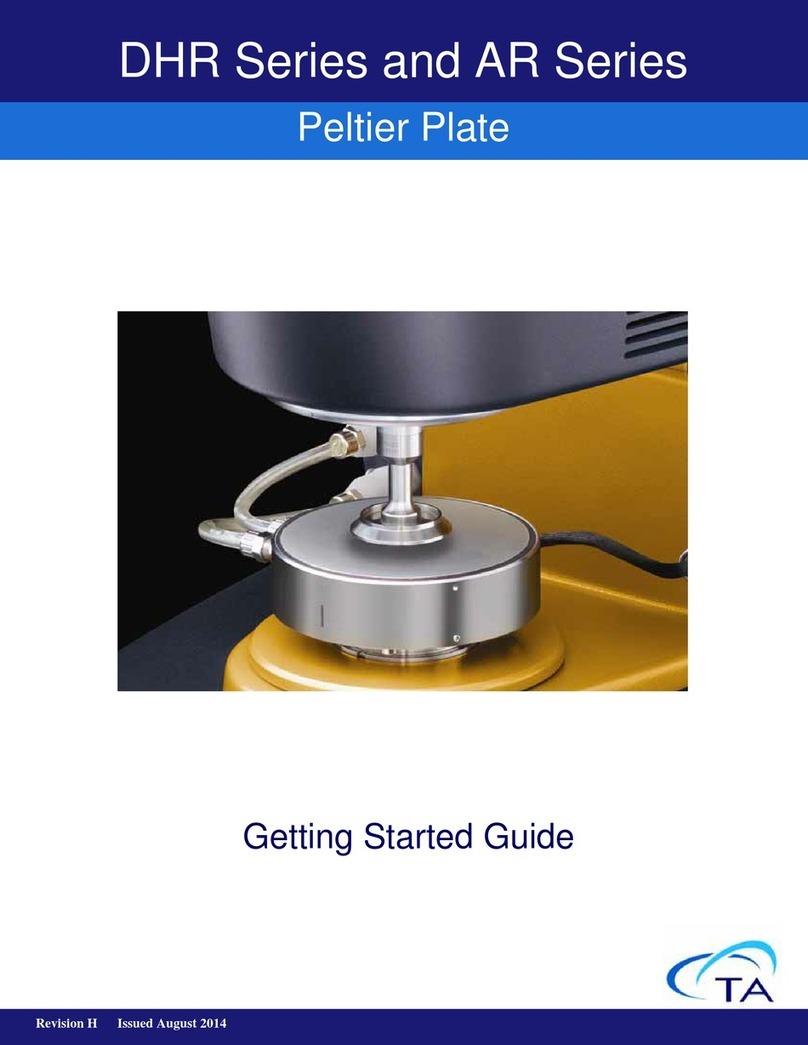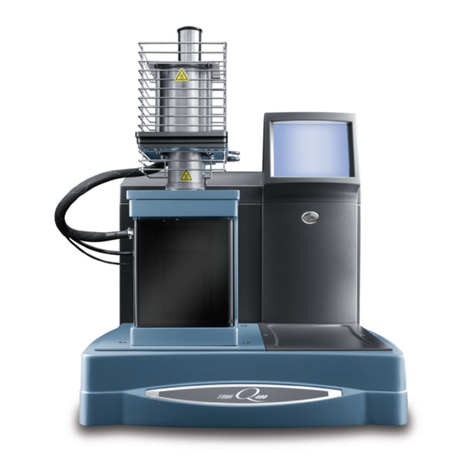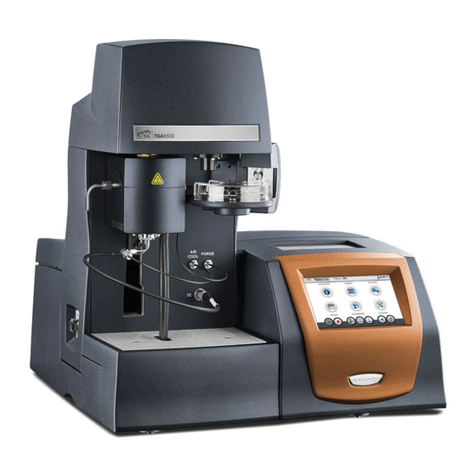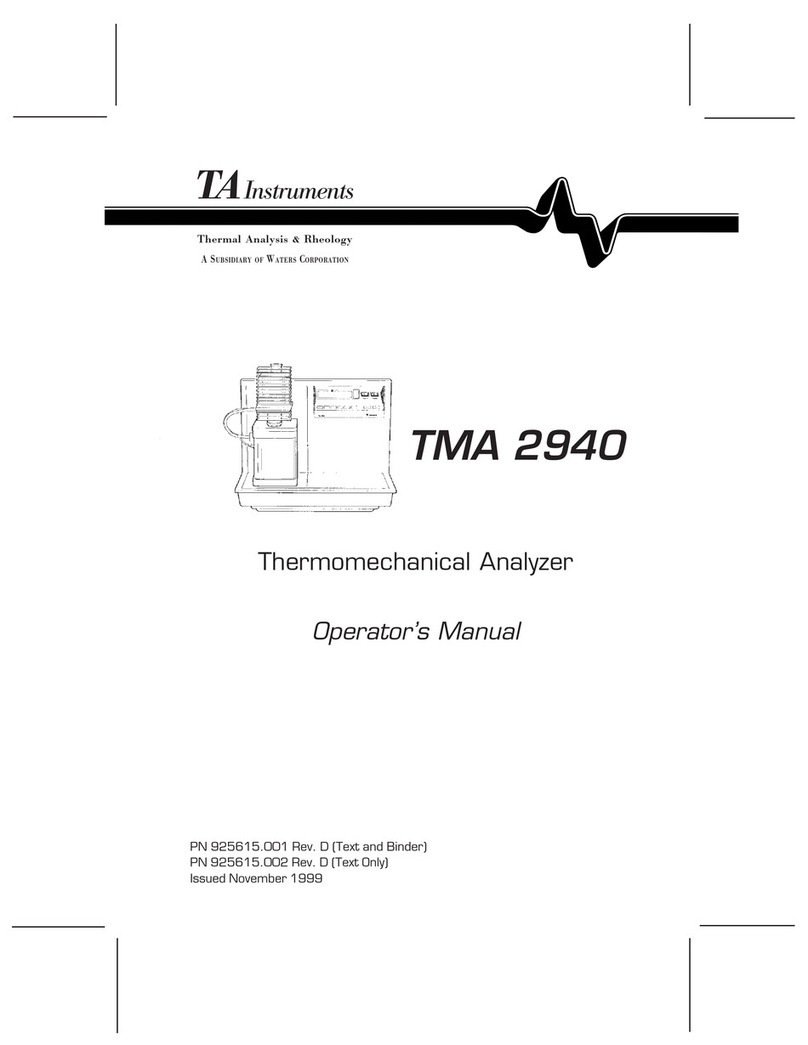
DSC Q Series Getting Started Guide
5
Chapter2:InstallingtheDSC....................................................................................................................... 31
Unpacking/RepackingtheDSC....................................................................................................................... 31
InstallingtheInstrument.................................................................................................................................. 31
InspectingtheSystem................................................................................................................................31
ChoosingaLocation.................................................................................................................................. 32
ConnectingCablesandLines................................................................................................................... 33
Ports...................................................................................................................................................... 33
EthernetSwitchSetup........................................................................................................................ 35
PurgeLines.......................................................................................................................................... 37
CoolingGasLine................................................................................................................................. 38
BasePurgeLine................................................................................................................................... 38
VoltageConfigurationUnit............................................................................................................... 39
PowerSwitch....................................................................................................................................... 40
PowerCable......................................................................................................................................... 40
StartingtheDSC................................................................................................................................................ 40
ShuttingDowntheDSC................................................................................................................................... 41
InstallingtheDSCCoolingAccessories......................................................................................................... 42
InstallingtheFinnedAirCoolingSystem.............................................................................................. 42
InstallingtheQuenchCoolers.................................................................................................................. 43
QuenchCoolAccessoryforFACS.................................................................................................... 43
QuenchCooler..................................................................................................................................... 44
InstallationofAdditionalItems...................................................................................................................... 46
InstallingtheManualLids........................................................................................................................ 46
InstallingtheAutosamplerTrayandDustCover................................................................................. 46
Chapter3:Use,Maintenance,&Diagnostics............................................................................................ 47
UsingtheDSC.................................................................................................................................................... 47
BeforeYouBegin........................................................................................................................................ 47
CalibratingtheDSC.......................................................................................................................................... 48
TzeroTM....................................................................................................................................................... 49
BaselineSlopeandOffsetCalibration..................................................................................................... 49
Enthalpy(Cell)ConstantCalibration...................................................................................................... 50
TemperatureCalibration........................................................................................................................... 50
HeatCapacity(Q2000/Q1000)Calibration............................................................................................. 50
HeatCapacity(MDSC®)Calibration...................................................................................................... 50
PressureCalibration.................................................................................................................................. 51
AutosamplerCalibration.......................................................................................................................... 51
Q2000/Q200/AutoQ20AutosamplerCalibration.......................................................................... 51
Q1000/Q100AutosamplerCalibration............................................................................................ 53
RunningaDSCExperiment............................................................................................................................. 54
ExperimentalProcedure........................................................................................................................... 54
LoadingtheSample................................................................................................................................... 55
StartinganExperiment............................................................................................................................. 55
StoppinganExperiment........................................................................................................................... 56
MaintainingtheInstrument............................................................................................................................. 57
